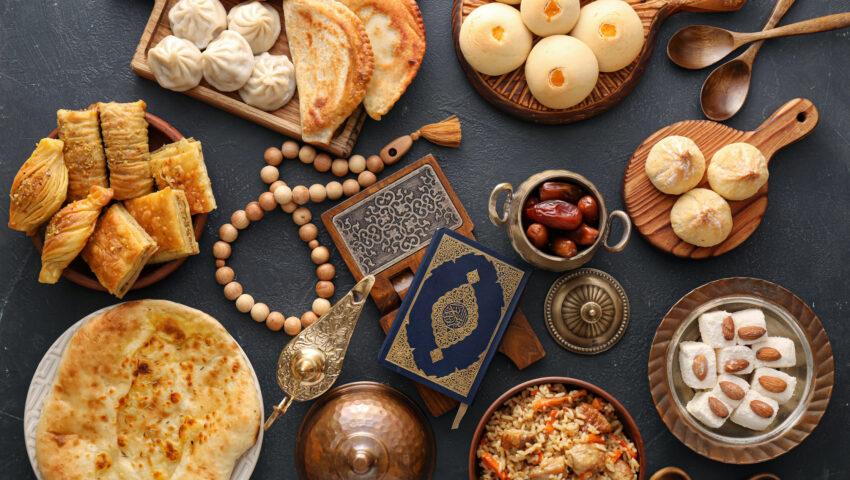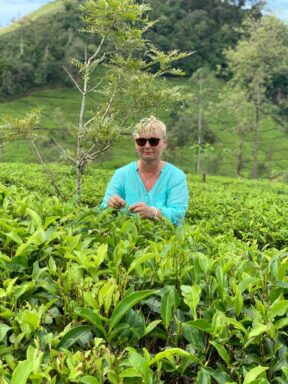Blogs
Celebrating Eid ul-Fitr

Islam is the worlds second largest religion, with 2 billion followers or 24% of the worlds population. Muslims are required to follow strict dietary laws about which foods are permitted (halal) and which are forbidden (haram). Halal food rules require that Allah’s name is invoked at the time of the animal’s slaughter – lamb, beef, goat and chicken are halal, as long as this rule is followed. Fish and eggs are also halal, but must be kept separate from meat during preparation. All pork products are forbidden (haram), as is alcohol.
Eid ul-Fitr is one of the biggest festivals celebrated by Muslims across the globe. It marks the end of the holy month of Ramadan when observing Muslims self-reflect and abstain from eating and drinking between dawn and dusk.
Also dubbed “Festival of Sweets” or “Sweet Eid”, the three-day festivities are heralded by the first sighting of the new crescent moon.
The holiday is marked by the offering of a special prayer in the morning and giving Zakat al-Fitrah (an obligatory form of charity) followed by friends and families coming together to celebrate, exchange gifts and envelopes of cash and of course, feast on lots of good food.
Every Muslim culture celebrates Eid ul-Fitr a little differently. For instance, in Turkey, the celebration involves handing out candy and sugar-coated almonds to children. For Moroccans, the holiday spread is incomplete without sweet treats like Fekkas, Kaab el Ghazal and Ghoriba Bahla. Meanwhile, in Indonesia, traditional delicacies like Ketupat, which is considered a symbol of blessings and forgiveness, are prepared as part of the festivities.
From decadently drool-worthy desserts to hearty curries oozing with flavours, check out some of the yummiest signature Eid ul-Fitr recipes from around the world:
Kue Lapis
Kue Lapis is a colourful multilayered pudding made of rice flour, coconut milk, tapioca flour and sugar. Considered to have its origins in Dutch East Indies, the jelly-like snack is a holiday must-have in Indonesia. It’s also pretty popular in neighbouring Malaysia and Singapore. Whipping up this Instagram-worthy rice pudding is a laborious affair though as it’s made by steaming layer by layer with alternating colours and warm spices.
Bolani is one of the holiday mainstays of Afghanistani cuisine. The pan-fried pastry pockets are typically filled with a mixture of vegetables like leeks, potatoes, spring onions and pumpkin or minced meat. Some varieties also use red or green lentils as filling. The half-moon-shaped finger food is unique to Afghanistan and is traditionally served with carrot jam, green chutney or a yogurt dip.
Shahi Tukda
Also known as Double ka Meetha or Indian bread pudding, this sumptuous sweet dish is made with slices of bread, condensed milk, sugar, ghee or clarified butter, saffron and cardamom. It’s a popular Eid delicacy in India and Pakistan. There are several theories regarding the origin of Shahi Tukda. Some believe that Babur, the founder of the Mughal empire in India, introduced it to Southeast Asia in the 16th century.
Ma’amoul
No holiday celebration in the Levant cultures is complete without these delicious butter cookies that are typically filled with dates, walnuts and pistachios. Women in Levant households start preparing these shortbread cookies during the days leading up to Eid when it’s served to the guests with tea or coffee.
Tufahije
Made of whole poached apples stuffed with caramelised walnuts and whipped cream, this delight is a key component of any Eid spread in Bosnia and the rest of the Balkans region. Some consider this dessert to have its origins in Persia. Although, it was introduced to the locals in the Balkans by Ottoman invaders during the conquest of the region.
Assida
In Morocco, the Eid celebration is kicked off by having a bowl of this Bedouin-inspired sweet dish in the morning. It’s essentially a thick porridge flavoured with butter, honey or date syrup that’s typically eaten by hand. Different versions of Assida are also popular in Arabian peninsula countries like Libya, Oman, Saudi Arabia and Yemen.
Lokum
Commonly known as Turkish Delight, these jellied cubes are made with cornflour, sugar and rosewater. Some varieties are also flavoured with orange blossom water, pomegranate or lemon. The traditional confection is a must-have during Eid celebrations in Turkey right along with gooey Baklava. The unique treat is thought to have originated 500 years ago during the Ottoman period. Turkish Delight is also well-known in the neighboring Balkan countries of Bosnia and Romania where it’s locally known as Rahat Lokum.
Sheer Khurma
Made with broken semolina vermicelli, this aromatic pudding is an integral part of Eid spreads in Southeast Asian households. Spiked with rose water, dried fruit and fragrant spices like saffron and cardamom, this luscious dessert is typically served right after Eid prayer in the morning. Sheer Khurma is considered a native to Persia that was introduced across Central and Southeast Asia through the Silk Route.
Shared below is my favourite recipes, tried and tested
Bolani




